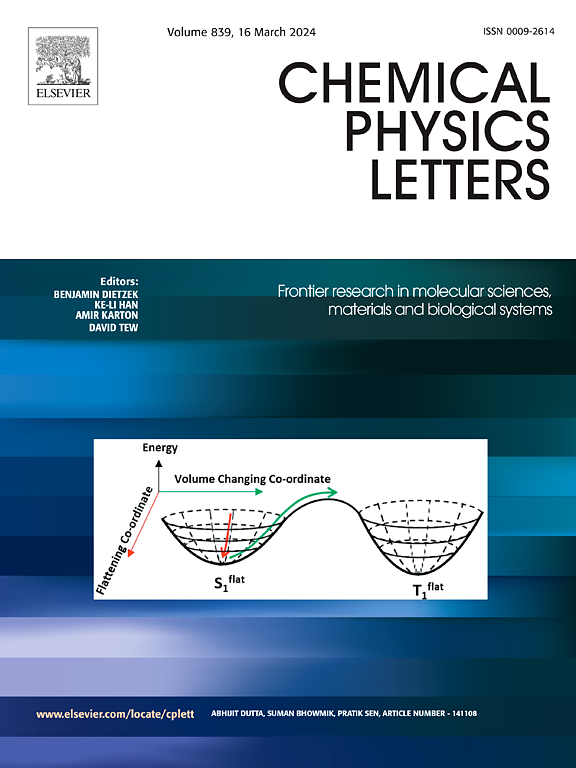Effects of intramolecular and intermolecular hydrogen bonding on the ESIPT process in 2-(2′-hydroxyphenyl)imidazo[1,2-a]pyridine derivative
IF 2.8
3区 化学
Q3 CHEMISTRY, PHYSICAL
引用次数: 0
Abstract
We investigate the excited-state intramolecular proton transfer (ESIPT) process and luminescence mechanism of a 2-(2′-hydroxyphenyl)imidazo[1,2-a]pyridine derivative (HIP-Br) in dichloromethane (DCM) and dimethyl sulfoxide (DMSO) using both implicit and explicit solvation models. Computational results reveal that the ESIPT process of HIP-Br proceeds efficiently in DCM regardless of the solvation model. In contrast, in DMSO, the ESIPT process is suppressed under the explicit solvation model due to the formation of intermolecular hydrogen bonds between HIP-Br and DMSO molecules, which disrupt the intramolecular hydrogen bond. This study underscores the importance of considering explicit solute–solvent interactions when modeling excited-state processes in hydrogen-bonding solvents.

分子内和分子间氢键对2-(2′-羟基苯基)咪唑[1,2-a]吡啶衍生物ESIPT反应的影响
利用隐式和显式溶剂化模型研究了2-(2 ' -羟基苯基)咪唑[1,2-a]吡啶衍生物(hips - br)在二氯甲烷(DCM)和二甲亚砜(DMSO)中的激发态质子转移(ESIPT)过程和发光机理。计算结果表明,无论溶剂化模型如何,HIP-Br的ESIPT过程都能在DCM中有效进行。相比之下,在DMSO中,在显式溶剂化模型下,由于HIP-Br和DMSO分子之间形成分子间氢键,破坏了分子内氢键,ESIPT过程被抑制。这项研究强调了在氢键溶剂激发态过程建模时考虑显式溶质-溶剂相互作用的重要性。
本文章由计算机程序翻译,如有差异,请以英文原文为准。
求助全文
约1分钟内获得全文
求助全文
来源期刊

Chemical Physics Letters
化学-物理:原子、分子和化学物理
CiteScore
5.70
自引率
3.60%
发文量
798
审稿时长
33 days
期刊介绍:
Chemical Physics Letters has an open access mirror journal, Chemical Physics Letters: X, sharing the same aims and scope, editorial team, submission system and rigorous peer review.
Chemical Physics Letters publishes brief reports on molecules, interfaces, condensed phases, nanomaterials and nanostructures, polymers, biomolecular systems, and energy conversion and storage.
Criteria for publication are quality, urgency and impact. Further, experimental results reported in the journal have direct relevance for theory, and theoretical developments or non-routine computations relate directly to experiment. Manuscripts must satisfy these criteria and should not be minor extensions of previous work.
 求助内容:
求助内容: 应助结果提醒方式:
应助结果提醒方式:


